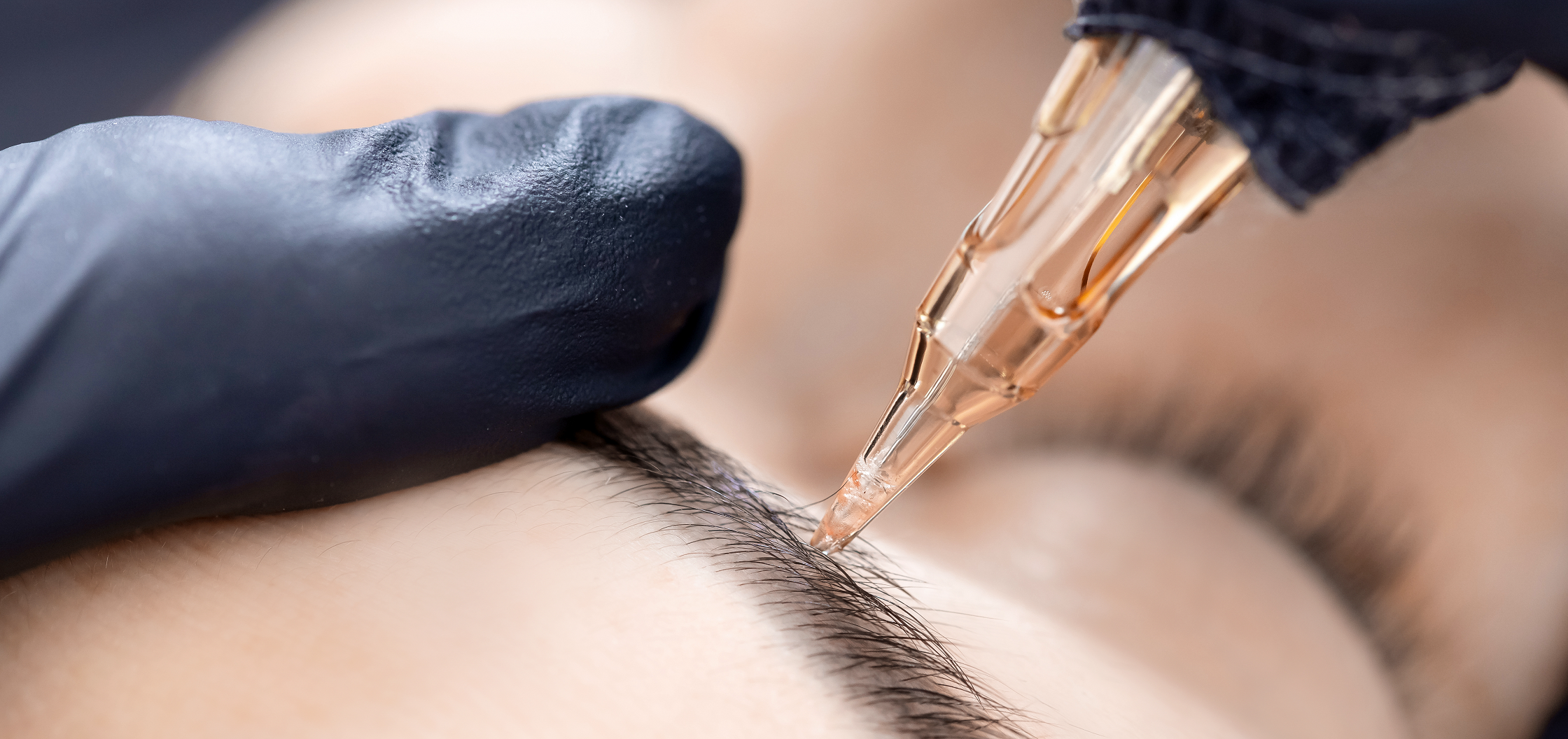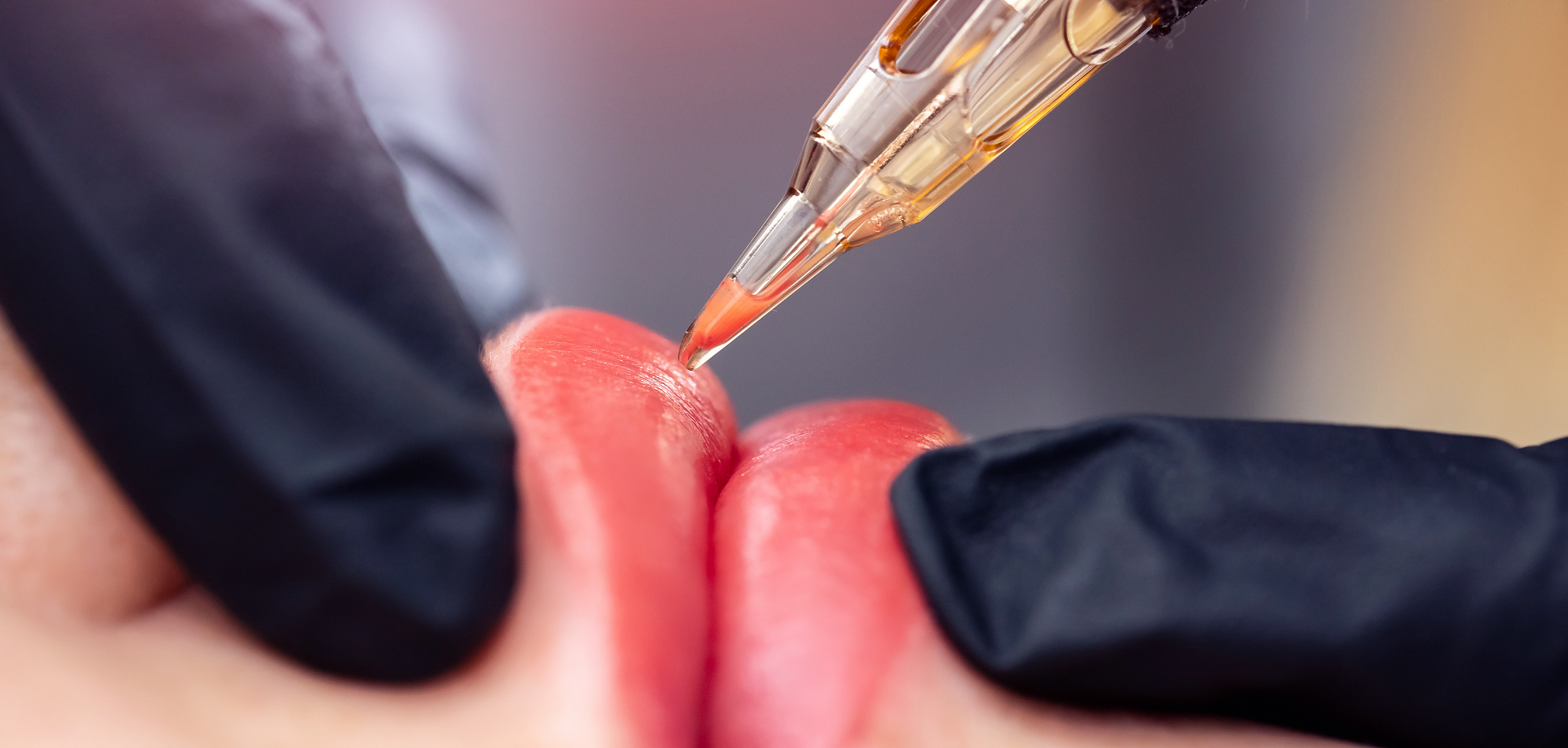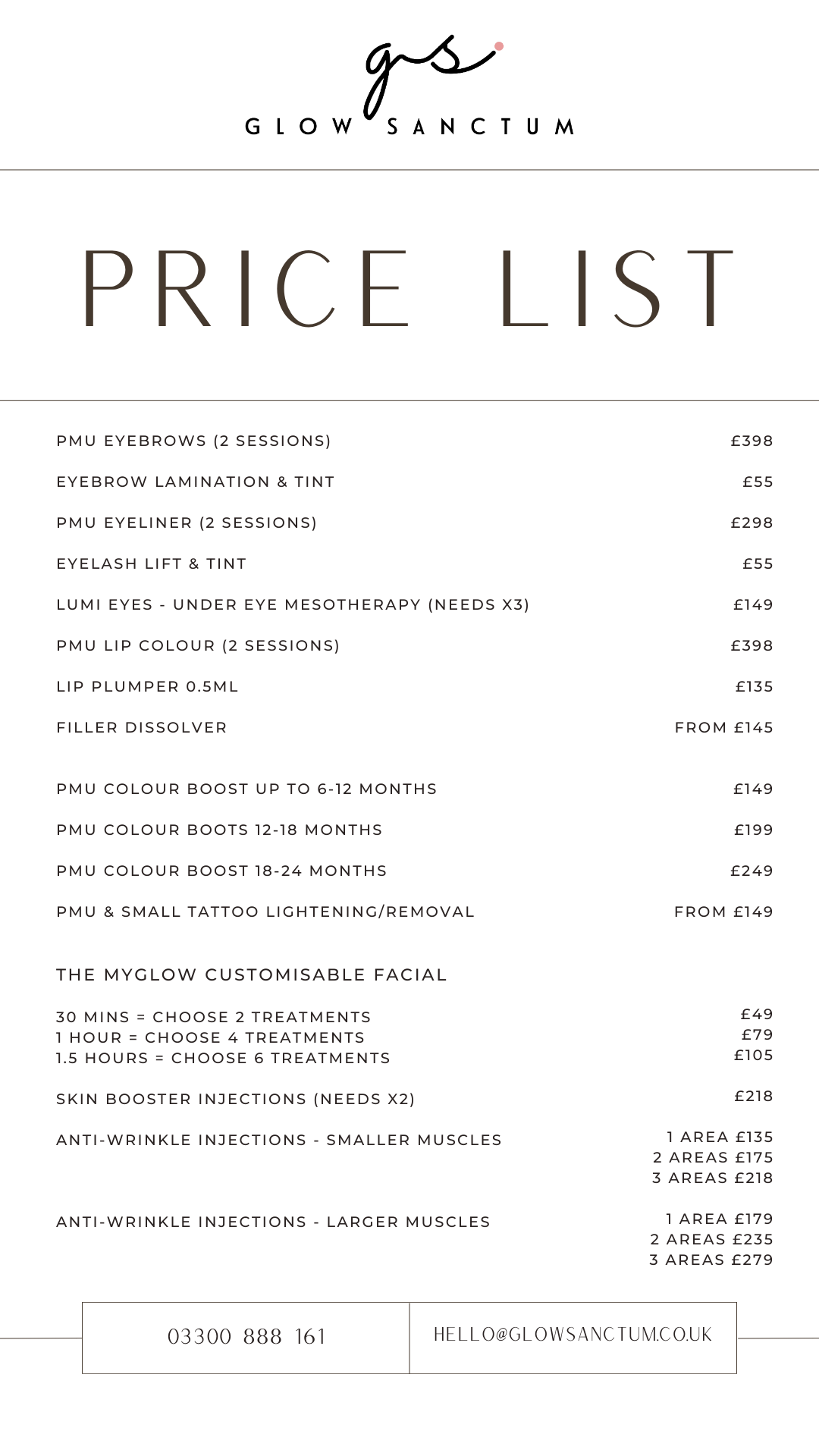
EYEBROWS
SHADED AND OMBRÉ EYEBROWS - Enhances brow shape, definition and colour with a soft, powder-like shading effect.
COMBINATION BROWS - Enhances brows using a combination of shading and hair stroke techniques.
Each of the above procedures include two appointments 6-8 weeks apart when purchased as a full price, standalone treatment.
Maintain and enhance your gorgeous new brows with a BROW TINT and LAMINATION. Please click here for more information.

EYES
LASH DEFINE & GLOW - Adds depth and subtle definition to the lash line. Top only or top and bottom lashes.
The above procedure includes two appointments (an initial and a perfecting appointment), 6-8 weeks apart when purchased as a full price, standalone treatment.
Maintain and enhance your fabulous new eyes with an EYELASH TINT and LIFT. Please click here for more information.

LIPS
COLOUR GLOW LIP BLUSH - Enhances your lips with a layer of transparent colour. This procedure includes an initial and a perfecting appointment, 6-8 weeks apart when purchased as a full price, standalone treatment.
COLOUR BALANCING GLOW - For melanin rich lips. Requires 2-4 appointments 6-8 weeks apart, depending on individuals skin and desired result. Includes all the necessary appointments when purchased as a full price, standalone treatment.
REMOVAL - Certified Li-FT Saline Removal Specialist. From £149 per session. Several sessions are generally required – please get in touch for a quote or if it’s a very small area, then go right ahead and book!
PRICE LIST
-
-
Permanent make-up, also known as micropigmentation, is a cosmetic procedure to create long-lasting eyeliner, lipliner or eyebrow definition.
What to think about before you get permanent make-up:
It's important to be absolutely certain before you go ahead with permanent make-up.
How much does it cost?
In the UK, the cost of permanent make-up varies from £75 for a beauty spot to £500 for lip liner.
Limitations:
It may fade a little every year (some people decide to pay extra to maintain the look)
There's no guarantee you'll achieve the desired effect
Mistakes can be hard to fix – you'll need to undergo saline, laser or chemical tattoo removal to fix any mistakes. At Glow Sanctum we offer Saline removal, which is the least painful and one of the safest and most effective forms of removal for Permanent Makeup.
Make-up styles change over time. For example, thick, well-defined eyebrows may not be fashionable in 5 years' time
Safety:
Providers of permanent make-up should work in a clean, safe and appropriate environment, with processes in place to deal with any complications. They are also required by law to be licensed and insured.
Micropigmentation requires specific training, so check the practitioner's training and qualifications. Also, check with your GP that having medical micropigmentation will not interfere with any planned treatment.
If you are unsure about any aspect, please don’t hesitate to ask before going ahead with any treatment.
Do not consider permanent make-up if you're prone to keloid scarring.
What it involves:
Consultation
You should have a thorough consultation beforehand to discuss the look you would like to achieve from permanent make-up and to agree on the colour, position and shape. Find out about what process will be followed if something goes wrong during the procedure.
Take time to think about your decision.
A patch test should also be done, to make sure you're not allergic to the pigment.
On the day:
A local anaesthetic cream will be applied to numb your skin. The practitioner will then draw on your skin using a surgical pen.
A sterile single-use needle will be inserted underneath the upper layers of skin to deposit a safe, medical grade pigment, which is least likely to cause allergic reactions and bleeding.
The procedure takes a number of hours to complete.
You'll usually need 2 applications spaced 4 to 6 weeks apart, and "maintenance" or "top-up" treatments after 1 to 3 years, which will cost extra.
Afterwards:
You may be advised to allow the area to real ‘dry’. This is often the best and safest option.
Alternatively your practitioner may apply a barrier cream (this is always advised for lip procedures). You may be advised to apply this twice a day if you feel the area drying out and continue to use it for up to 14 days, or until the area has fully healed.
The area may feel itchy or be quite dry while it is healing.
Initially, the colour may appear very intense. It takes about 4 weeks for the colour to fade to its permanent shade.
The surrounding area may be red and a little swollen immediately after treatment and (depending on the procedure) for a few days afterwards. There may be a few spots of blood on the first day.
You'll need to avoid direct jets from a shower or soaking in the bath, as this may remove the pigment or increase the risk of infection. You'll also need to avoid chlorinated water (such as swimming pools) and exposure to sunlight until the area has fully healed.
It can take about 2 weeks to fully heal, after which time you'll be able to follow your usual routine and use beauty products.
Possible risks of permanent make-up are:
Disappointing results. Mistakes can be hard to fix and will take time to fade.
Infection. A skin reaction, such as swelling, cracking, peeling or blistering.
Granulomas – tiny lumps that form under the skin around the pigment.
Scarring, or overgrowths of scar tissue, such as with Keloid or Hypertrophic scars.
An allergic reaction to the pigment – but this is rare, as a patch test will usually show this beforehand.
Some people get swelling or burning in the tattooed area if they have an MRI scan, but this is rare.
What to do if you have problems:
You should look out for problems with healing or skin pigmentation changes.
If you have any symptoms or complications that require medical attention, it is best to go back to the practitioner who treated you. If this is not possible, you can go to a GP or contact NHS 111.
This information has been taken from (and partially edited): https://www.nhs.uk/conditions/cosmetic-procedures/non-surgical-cosmetic-procedures/permanent-make-up/
-
The short answer is no, Microblading is not offered at Glow Sanctum.
The reasons it’s not on offer here are that microblading uses a more rudimentary method of implanting pigment, requiring the skin to undergo multiple cuts using a hand held tool. The procedure is far more painful than machine work, can result in increased scar tissue and is not suitable for oily or delicate skin types.
-
Permanent Makeup differs from tattoos in that it uses specially formulated pigments that the body can break down and dissolve over time, whereas tattoos use permanent inks. Permanent Makeup techniques differ from tattooing in that they use a smaller machine, often with finer needles to implant pigments into just the superficial, or upper layers of the skin, which is at a shallower depth than traditional tattoos.
-
The first thing to do is to use the online booking platform (by clicking on the “CLICK TO BOOK” button) to book a 30-minute consultation.
This is best done in person at the studio in Hanwell, West London, but can be done remotely.
The cost of your consultation will be deducted from the cost of your procedure if you decide to book.
During the consultation we will discuss shape, colours, your desired outcome as well as verifying your suitability for the procedure.
If you decide to book, we will find a suitable appointment time and you will be advised on how to prepare for your procedure.
The initial treatment will generally take anywhere between 2-4 hours to complete.
The pigment is implanted into the upper layers of the skin using a specially designed tattoo machine.
The colour must be built up gradually, so it will take multiple passes. The process should not be painful but will likely cause some discomfort.
Once the initial procedure has been completed, you will be advised on aftercare, and we will book you a follow-up session in 6-8 weeks. This is an opportunity to review the procedure and add some further pigment, as some of it will have faded during that time.
Some lip treatments may require more than one follow-up, depending on the desired result, but this can be discussed at your initial consultation.
-
You can wear makeup, so long as it is not in the area that has been treated.
You must wait until the area has fully healed, around two weeks, before applying makeup to the treated area or you risk getting an infection, which can lead to complications.
When you do start using makeup in that area again, it is a good idea to treat yourself to some fresh products, as your old ones may be harbouring bacteria that could contaminate your newly treated skin.
-
This depends on several factors, including the area treated, the desired effect, your lifestyle, the products you use, your age and of course your skin type and skin tone.
The average recommendation for touch-ups on most procedures is 1.5-2 years.
People with oily skin will usually require more frequent touching up than dry skin.
The more mature your skin, usually the less frequently you’ll require a touch up.
You will be given more detailed and personal advice following your second appointment (review & touch-up treatment included in your price).
-
The pigments at Glow Sanctum are medical grade and produced to European quality standards, so the incidences of an allergic reaction are very rare.
However, there’s a very small chance you could have an allergic reaction, so to minimise the risk, you will be provided with a patch test to be completed at least 24 hours before your procedure is due.
-
The usual side effects are short term and should disappear within a week to ten days. These include redness, itching, swelling, scabbing and peeling of the skin.
-
These treatments represent a major breakthrough in permanent cosmetics and the results are very natural looking.
Most people won’t be able to tell what the difference is in your appearance, but they may notice how brightened and refreshed you look.
-
Give yourself time.
It is usual to feel uncertain about the result during the healing stage of the procedure, so please give yourself time to get used to your new look and for the final result to appear.
It is often much lighter than you might initially expect.
If you’re happy with the colour saturation achieved in the first session, you can choose not to return for your 6-8 week touch-up and allow the treatment to fade naturally.
If you’d like to speed up the fading process, you can use products containing retinol, vitamin C or hydroquinone on the area in question, however you should not use these near to your eyes!
If after your skin has fully healed, you are still unhappy, please get in touch so that we can discuss what to do next. This may involve changing the shape or colour or carrying out steps to remove the pigment with saline.
Please note that removal will require several sessions, each followed by healing time.


